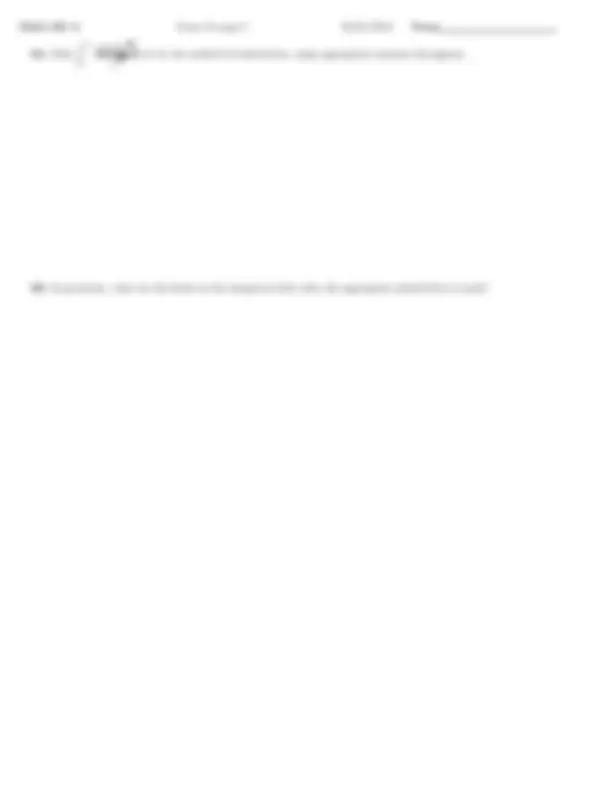





Study with the several resources on Docsity

Earn points by helping other students or get them with a premium plan


Prepare for your exams
Study with the several resources on Docsity

Earn points to download
Earn points by helping other students or get them with a premium plan
Community
Ask the community for help and clear up your study doubts
Discover the best universities in your country according to Docsity users
Free resources
Download our free guides on studying techniques, anxiety management strategies, and thesis advice from Docsity tutors
A math exam focusing on integration and volume calculation. Students are required to set up and evaluate integrals representing the area and arc length of regions between parabolas and straight lines, as well as the volumes of solids of revolution. They are also asked to estimate errors using given formulas and the values from a table of velocities.
Typology: Exams
1 / 5

This page cannot be seen from the preview
Don't miss anything!




1A. Set up the integral which represents the area of S if the corre- sponding approximations are rectangles each of whose base width is 4 x and each rectangle goes from a top curve down to a bottom curve. That is, the integral is of the form
dx.
1B. Evaluate the integral in (1A) to find that area. Show all your work.
2A. Set up the integral which gives the arc length of the curved part of the boundary of S, that is, the arc length of the graph of y = 9 − x^2 from x = −3 to x = 2.
2B. The integral in 2A is “doable” — the back of your book has a formula for the antiderivative you’d need. But it’s so complicated, and in practice, a good numerical approximation will do. Indeed, find the MID(50) approximation for the integral in 2A.
3A. Set up the integral(s) which represents the volume of the solid of revolution obtained by revolving S around the line y = −1. (Do not evaluate the integral(s)).
3B. Now set up the integral(s) which represents the volume of the solid of revolution obtained by revolving S around the line x = −3. (Do not evaluate the integral(s)).
5A. What is the physical meaning of
1 v(t)^ dt?
5B. For the integral
1 v(t)^ dt^ in (5A), estimate LHS(n), RHS(n), TRAP(n) and MID(n) for the maximum possible number of subintervals n in each case, using only the information available in the table. Clearly label all your answers!
5C. The table suggests that v(t) is an increasing, concave-down function on [0, 5]. Suppose it is, and there was enough
information to find I =
0 v(t)^ dt^ for each of LHS(n), RHS(n), TRAP(n) and MID(n) with^ n^ = 25.^ From smallest to largest, put these numbers in order: I, LHS(n), RHS(n), TRAP(n) and MID(n).
6A. Find
1
cos (
x ) √ x
dx by the method of substitution, using appropriate notation throughout.
6B. In particular, what are the limits on the integral in (6A) after the appropriate substitution is made?